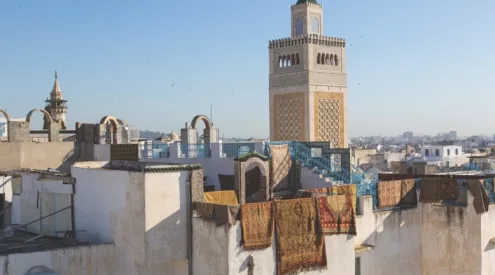Travelling to Ethiopia, to explore Addis Ababa, the Great Rift Valley and Harar was quite an experience! For most people in the world time includes the concept that the date changes at midnight, which is in the middle of the night. Of course, when this event occurs depends on your time zone, but it’s a pretty readily accepted fact of life. In Ethiopia however, which is GMT +3 hours, this event is not in the middle of the night, it’s at the equivalent of 06:00 in the morning.
You see Ethiopia has set its clock six hours ahead of its relative position to GMT putting it in the same time zone as Tokyo. So the day starts at 00:00 at what is in fact 06h00, meaning that when I am considering having lunch at 12h30 the clock is now reading 18h30. And if that wasn’t enough to get your head around, the country uses a different calendar. The New Year is in September and all twelve months have 30 days, oh, except the 13th month which has five, except in leap years. And Ethiopia is only in the year 2004 or maybe 2005.
And so, at best, I can say I started my trip in what may or may not have been January 2012, at a time I shall describe only as sunrise, and headed south-east out of the capital, Addis Ababa.
Following my travels in lush and fertile Uganda and Burundi, the arid lands of Ethiopia were a stark change. Addis is at high altitude and as I dropped down into the Great Rift Valley I passed through an area scarred by volcanic activity. Huge, larval rock formations filled the valleys whilst dust devils raced across a desolate landscape. Life here lives on the edge and it is easy to imagine how even the slightest environmental perturbation could have serious consequences on all life.
Turning east and crossing Lake Beseka (literally crossing it as both the road and rail line are built through the lake), the land turned into a more familiar grassland savannah with pastoralist herders, and further east still agriculture gains a foothold. Ethiopians are celebrating Epiphany today and I stopped for a while to watch a procession, led by the local priests to their church carrying a mock-up of the Ark of the Covenant. The whole town seemed to have come out to take part in the event.
East of the country, where Islam becomes the more prominent religion, the day was like any other; several towns were clearly in the full swing of their colourful markets. Traders from all around had gathered in the town squares to sell their wares.
It took eleven hours to reach my destination. It was not particularly far, but there are many mountains to traverse on steep and winding roads. More specifically, these roads are full of people and their livestock; so progress was slow.
By early evening, or late morning by Ethiopian schedules, I arrived in the walled city of Harar. After checking into the (basic) Heritage Plaza Hotel, I walked the many narrow lanes within the walls, taking in the aromas of the spices wafting through the air. At one gate an old man whistles loudly and takes a seat on a stool with a bucket and small stick. Within moments, seven spotted hyena emerge from the darkness to feed on the meat scraps and bones in the bucket. This tradition of inviting these wild but completely habituated animals for dinner has been going on for generations; maybe even 600 years or so, according to my guide. There are even special ‘hyena gates’ in the walls of the city through which food scraps for the hyenas were put before the city sprawled beyond the confines of the wall. According to legend, the hyenas were fed by the inhabitants of Harar to appease the animals in good times, so that in times of drought they would not attack people or livestock. The man, tonight, would put the meat on the end of his short stick, hold that in his mouth and the hyenas would walk up and snatch it away. It was an incredible experience being able to observe these fascinating creatures from close quarters.
The following morning gave another opportunity to visit the walled city, accompanied by a local guide. According to UNESCO, it is considered ‘the fourth holy city of Islam’ with over one hundred mosques (the only buildings allowed to be painted green), three of which date from the 10th century, and many more shrines. You can visit several museums including Emperor Haile Selassie’s house. As you walk along the 365 lanes you catch glimpses of colour in homes and gardens tucked away all over the place. The markets throng with activity and the city has a vibrant, if slightly smelly feel (any 7th century walled city without proper sewerage will smell a bit!).
Not far from the city lies the 6000 square kilometre Babile elephant reserve, home to the large grey ones, as well as to greater and lesser kudu, lion and cheetah. However do not expect to see any of these, but do expect to see large numbers of pastoralists and their many, many cattle, goats, donkeys, sheep and camels. Also to view in this area is the Valley of Marvels, a road through some magnificent natural rock sculptures and home to Hamadryas baboons.
Speaking to my guide and just by looking around it is clear that few tourists venture this far east in Ethiopia. Perhaps its proximity (only around 115km I am told) to the Somali border may have something to do with it, but the trip is well worth it.
This tour was organized by Diversity Tours Ethiopia
If this post has inspired you to explore Ethiopia, Getaway has some wonderful travel packages to Ethiopia available!
















